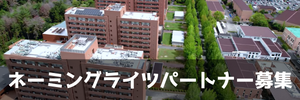(English announcement can be found in the latter half of this notice.)
広島大学バイオマスプロジェクト研究センターと中国地域バイオマス利用研究会の共催で広島大学バイオマスイブニングセミナーを開催しています。バイオマスに関する基本的な考え方から最先端の情報までをカバーして、この地域におけるバイオマスの活動に資することを目的とするものです。第57回を以下の日程で開催しますので、ご参集下さい。
日時 2017年10月18日(水)16:20~17:50
会場 広島大学東広島キャンパス工学部110講義室
http://hiroshima-u.jp/eng/access/lectureroom
http://hiroshima-u.jp/eng/access/building
http://hiroshima-u.jp/access/
プログラム
解説 広島大学大学院工学研究科 教授 松村 幸彦
講演 広島大学大学院先端物質科学研究科 M2 高垣 俊宏
「微生物燃料電池を用いた余剰汚泥分解と電力変換」
現在、一般排水の浄化には主に活性汚泥法が用いられています。活性汚泥法では細菌が有機物を代謝して増殖する結果、余剰汚泥が大量に発生します。余剰汚泥は約6割が高温炉で焼却され、建築材等にリサイクルされますが、焼却処分する際に発生する亜酸化窒素や焼却の助燃剤費が問題です。本研究では、追加的エネルギーが不要な微生物燃料電池(Microbial Fuel Cells, MFC)を用いて、余剰汚泥の分解処理、およびその電力変換の可能性の検証を試みました。
講演 広島大学工学部 B4 黒木 睦美
「キャピラリー菅を用いた水熱反応下でのグルコース分解の反応場質量分析」
近年、エネルギー需要の増加に伴い、化石燃料の枯渇や地球温暖化が深刻な課題となっています。これを解決するために、化石燃料の代替となる再生可能エネルギー源に注目が集まっています。その中でも有望視されているのがバイオマスで、特に、非可食部バイオマスから作られた第二世代バイオエタノールが注目されています。しかし、現段階では収率が低く実用化には至っていません。収率をあげるためには高性能の前処理による処理効率の改善が必要です。処理効率を改善するためには、短時間に高温で反応場に存在する他の化合物を検出することが重要です。本研究では、キャピラリー菅を用いて水熱条件下でそのような化合物を検出することができる反応場質量(in situ MS)分析システムを開発しています。質量分析に必要な真空圧力まで減圧させ、分析を行うことに成功しました。キャピラリー菅を長くすることにより、より高圧の状態での分析も可能になると考えています。
講演 広島大学工学部 B4 横山 裕生
「セルロースの酵素加水分解における5-HMFの影響」
近年、リグノセルロース系バイオマス原料からエタノールを得ることが注目を集めています。この技術の研究においての問題の一つに、熱水による前処理時に、発酵阻害物質である5-ヒドロキシメチルフルフラール(5-HMF)が発生することが挙げられます。5-HMFの発酵における影響は多くの研究がありますが、酵素加水分解における影響は知られていません。そこで、本研究ではセルロース1 gに、5-HMFの量を0、0.1、0.2 gと変えて酵素加水分解を行いその影響を確認しました。その結果,酵素加水分解における5-HMFの量の影響は無いことが分かりました。
講演 広島大学大学院工学研究科 M1 橋本 壮侍
「水熱条件下におけるDNAの分解特性」
リンは植物を育てる際の肥料ですが、その形態は無機リンです。近年、下水汚泥から無機リンを回収する研究が行われており、水熱処理はその方法の一つとして提案されています。本研究では下水汚泥に含まれているとされる有機リンの一つであるDNAを試料として用い、その分解特性、および超臨界条件におけるガス化特性を調査しました。その結果、超臨界条件では分解が進行しますが、生成された無機リンが析出することが判明しました。
司会 広島大学大学院工学研究科 研究員 Nattacha PAKSUNG
なお、18:00より意見交換会(参加費 800円)を開催します。ご都合の付く方はこちらにもご参加下さい。
The 57th Hiroshima University Biomass Evening Seminar
(The 22nd Hiroshima University ACE Seminar)
Biomass Project Research Center, Hiroshima University, and HOSTY Association are co-organizing the Hiroshima University Biomass Evening Seminar. This seminar covers topics from the fundamentals of biomass to the latest information so that it can contribute the activities on biomass in this district. The 57th seminar will be held as follows. Please join.
Date & Time: Wed .18 Oct., 2017 16:20-17:50
Place: Engineering 110 Lecture Room, Higashi-Hiroshima Campus, Hiroshima University
http://hiroshima-u.jp/eng/access/lectureroom
http://hiroshima-u.jp/eng/access/building
http://hiroshima-u.jp/access/
Program
Commentary: Yukihiko MATSUMURA
Professor, Graduate School of Engineering, Hiroshima University
Lecture: Toshihiro TAKAGAKI
M2 Student, Graduate School of Advanced Sciences of Matter, Hiroshima University
“Degradation of excess sludge and its power conversion by microbial fuel cells ”
Today, industrial wastewater is purified by activated sludge systems. However, these systems produce a large amount of excess sludge and they burn up excess sludge. Therefore, they spend a great amount of energy burning up excess sludge. On the other hand, the microbial fuel cells (MFC) sludge degradation systems do not need additional energy. Furthermore, what is better, electric power can be acquired from MFC. Therefore, this study is aimed at testing sludge degradation in MFC without burning.
Lecture: Mutsumi KUROKI
B4 Student, School of Engineering, Hiroshima University
“ In Situ Mass Spectrometry of Glucose Decomposition under Hydrothermal Reactions Using Capillary ”
The increase in global world energy demand is causing depletion of fossil fuel resources and leading to global warming. Therefore, potential sources of renewable energy to replace fossil fuels are required. One of the most promising renewable energy sources is biomass. Especially, the second generation bioethanol made from inedible biomass is gaining attention. A high-performance pretreatment process is needed to improve process efficiency. Hydrothermal pretreatment is suitable for this process. The process is simple and economical. To improve the process efficiency, it is important to detect other compounds that exist in the reaction field at high temperatures with a short lifetime. Our purpose is to develop an in situ mass spectrometry (in situ MS) analysis system that can detect these compounds under hydrothermal condition using capillary. In this study, we used capillary with inner diameter of 0.1 mm to reduce the high pressure of the reactor to the vacuum pressure required for MS analysis. Pressure reduction was successfully made, and MS analysis was conducted. By making the capillary longer, this technology should be applied to reactions under higher pressure.
Lecture: Hiroki YOKOYAMA
B4 Student, School of Engineering, Hiroshima University
“Effect of 5-HMF on Enzymatic Hydrolysis of Cellulose”
Today, the second-generation ethanol from lignocellulosic biomass is attracting attention. One of the problems for this technology is that 5-hydroxymethylfurfral(5-HMF) produced by hydrothermal treatment inhibits fermentation. However, whether 5-HMF inhibits enzymatic hydrolysis or not has not been well known. The objective of this research is to elucidate the effect of 5-HMF on enzymatic hydrolysis of cellulose adding different quantity of 5-HMF ranging from 0 to 0.2 g. As a result, addition of 5-HMF did not affect the enzymatic hydrolysis.
Lecture: Soshi HASHIMOTO
M1 Student, Graduate School of Engineering, Hiroshima University
“Decomposition characteristics of DNA under hydrothermal condition”
Phosphorus is used for fertilizer to grow plants and its form is inorganic phosphorus. Recently, phosphorus recovery from sewage sludge have been researched and hydrothermal treatment is proposed as one of the method. DNA is one of the organic phosphorus contained in sewage sludge and we determined the characteristics of decomposition and supercritical water gasification in this study. As the result, DNA decomposition was proceeded but it turned out that inorganic phosphorus in supercritical water precipitated.
Chair: Nattacha PAKSUNG
Researcher , Graduate School of Engineering, Hiroshima University
We will hold the discussion meeting from 18:00 (800 JPY needed). Join this meeting, too if you are available.


 Home
Home









